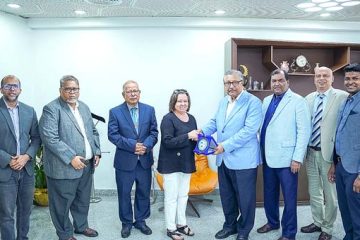Even an illiterate person can use the gadget
In a first for the country, the Bangladesh Council of Scientific and Industrial Research (BCSIR) has developed an arsenic-detecting kit which will be available for Tk 700 as against the Tk 1.5 lakh price of an imported one. “Even an illiterate person can use the gadget and easily detect the presence of arsenic in water,” BCSIR chairman SM Imamul Huq, on Monday told The Independent after disclosing the development to the press.
The new device will help people in arsenic-contaminated areas, he said adding, and the gadget has been invented in line with the ruling party’s election pledge to provide arsenic free water by 2013.
While an imported “arsenator” kit costs Tk 1.5 lakh, the price of the indigenous device would be available for only Tk 700, Prof (Dr) Huq said, adding, “users of imported arsenator are required to use imported chemicals while they can use local chemicals for the BCSIR kit.”
“We have applied for patent to the government and soon the device will be available in the market,” Prof Huq said.
Dr Nasim Sultan, chief scientific officer, Aminul Ahsan, senior scientific officer and eight other scientific officers of the BCSIR were involved in developing the kit.
Describing the circuit of the arsenic testing kit, Dr Sultan said the kit could detect the presence of arsenic in water. The circuit was developed using an integrated circuit, photo transistor, IR LED, comparator, capacitor, resistors, bridge rectifier and a diode.
He further said the first part of the circuit is a square wave generator that produces square waves of 100KHz to drive an IR LED. The second part is a current voltage converter (CVC) circuit made with an IC, a photo transistor and two resistors. A piece of mercury bromide paper is kept in between IR LED and the photo transistor. The CVC circuit converts the transmitted IR light to voltage as the output of this circuit, Dr Sultan
said. He added that the last part of the circuit consisted of a comparator and a display unit.
How to use it? Two gms of zinc powder and 1.5 gm of tartaric acid are added in 50 ml of water in a closed conical flux. After 20 minutes, the colour of the mercury bromide paper strip changes.
In the next step, when the strip of bromide paper is placed on the arsenic kit, the display unit of the device switches on a red light if the water specimen contains arsenic.
The unit beams a green light to indicate the tested water is safe for drinking. The device needs four pencil batteries of 5”x5”x1.5 volts (9 volts).
-With The Independent input




















